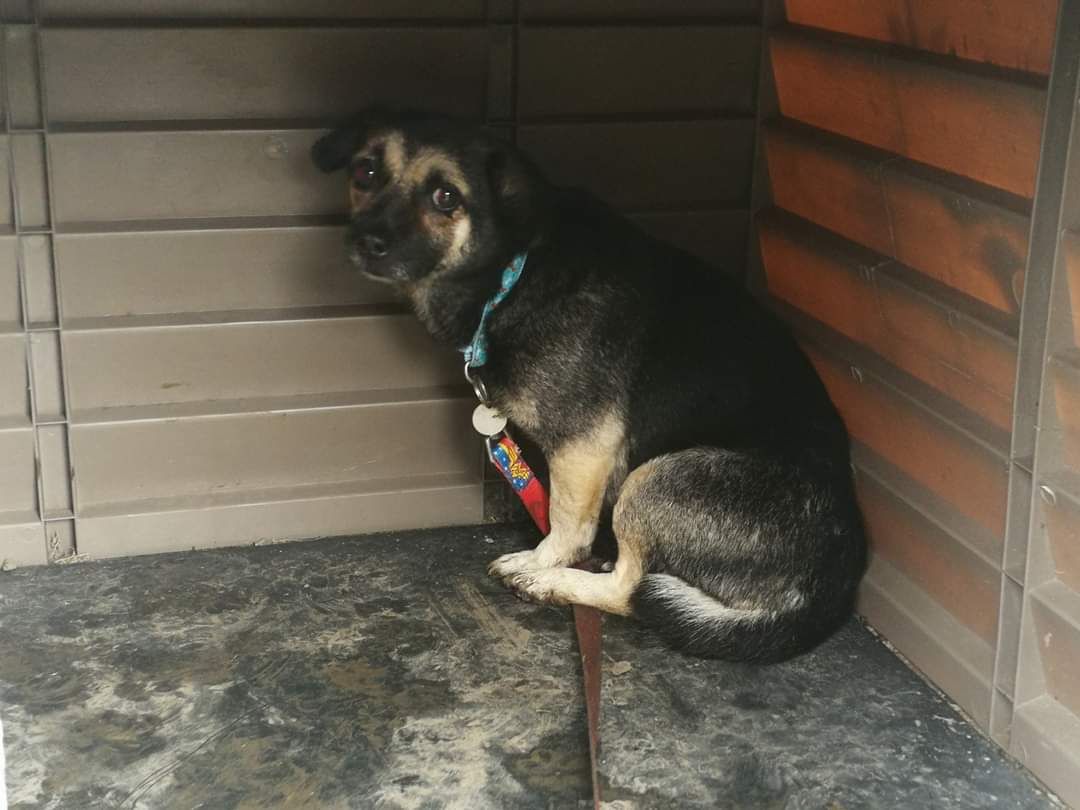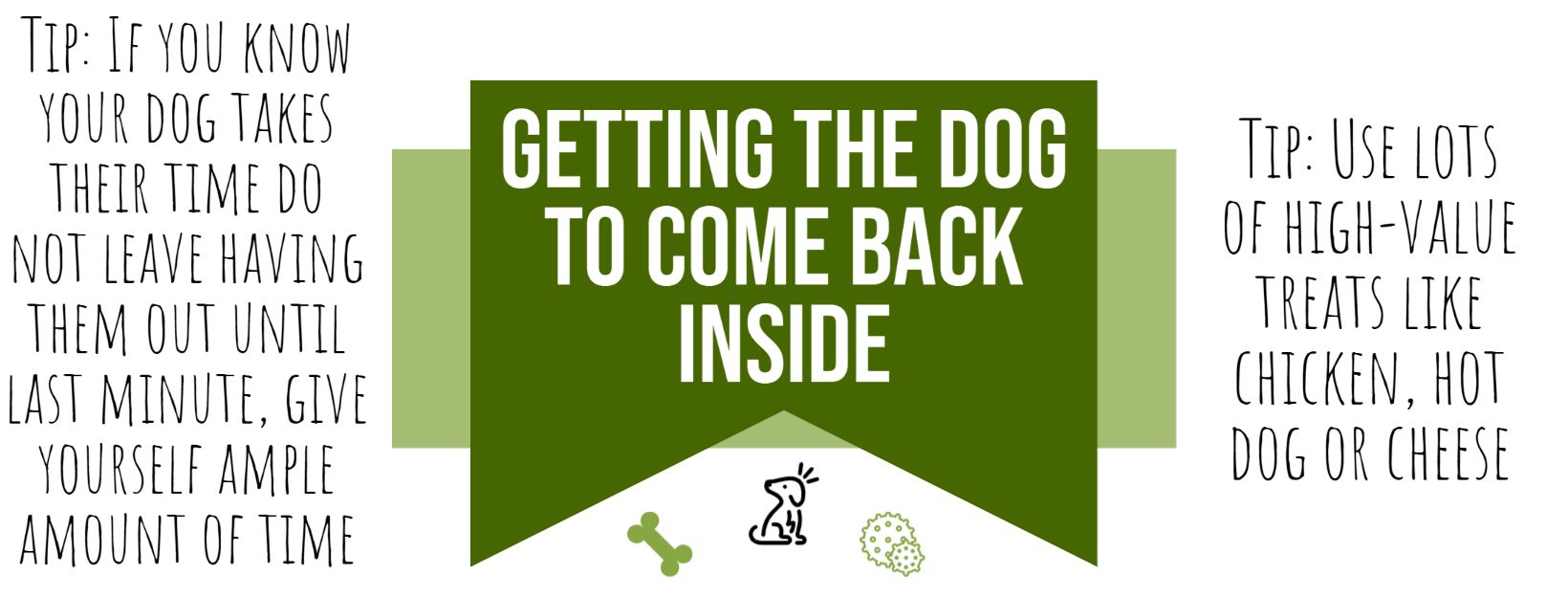
Some dogs like to give you the runaround when tryingto get them to come back inside and will play bow and run away from you - eventually they give up the game and will saunter back in as though nothing happened, however, the more timid dogs are much more likely to refuse to come back inside.
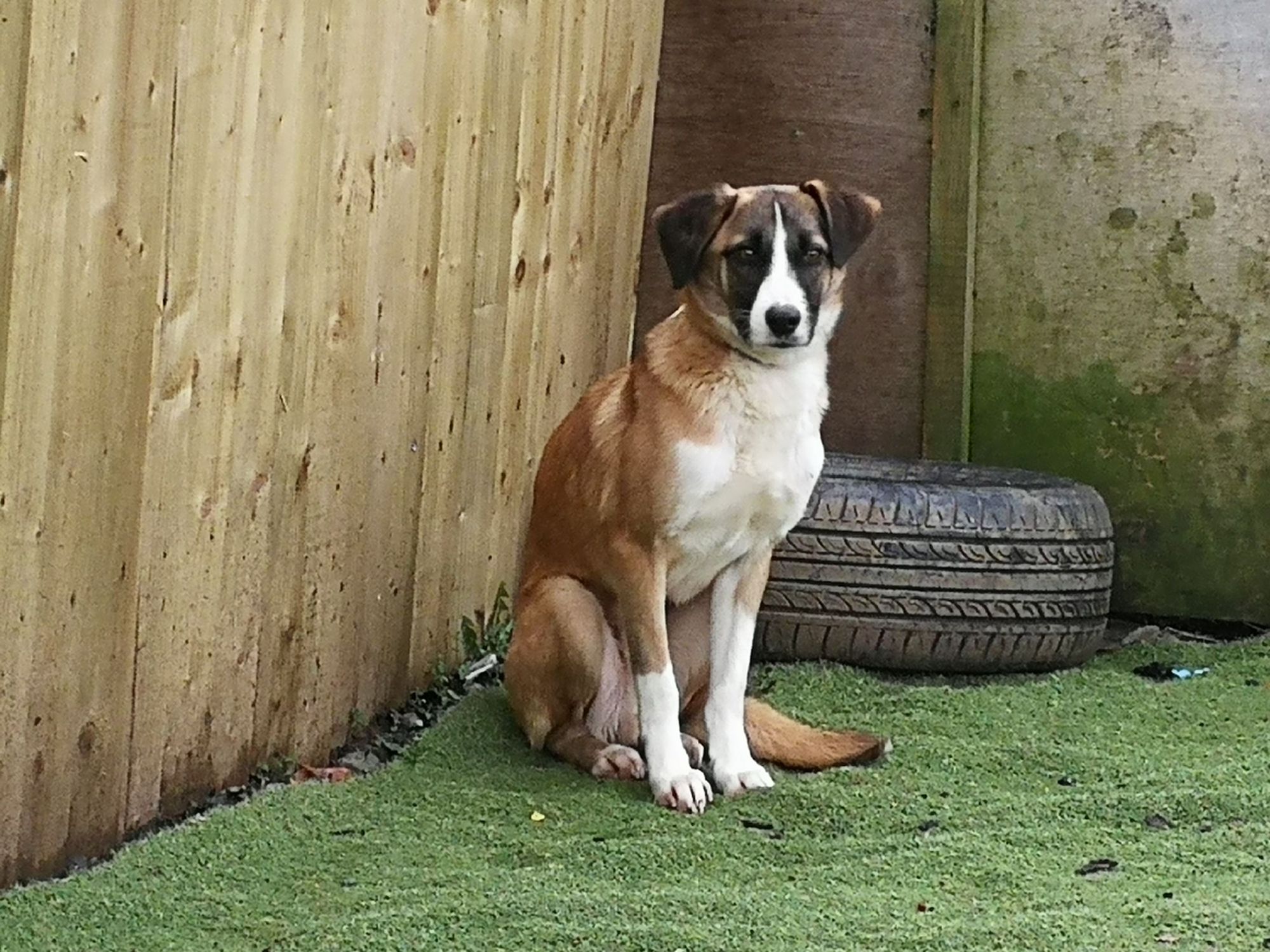
When taking on a very timid dog, you will be advised to keep them inside for a couple of days whist they adjust to the home space.
Typically the terrified dogs are the most undersocialised dogs due to their backgrounds. Many will have been born in the shelter or have had little to no contact with humans at all in their lives. If they have, it's never been positive.
These dogs are the ones that assess the fencing line and are hypervigilant upon arrival into the home, they try to compress themselves into one corner in their crate and do not move for hours, if not days.
Keeping the dog inside does mean that you will have toileting accidents, but you are working to change the dog's view of the home. We have had great successes from owners keeping the dog inside at least a couple of days. In those couple of days, as long as the dog is left alone they begin to associate the home as the safe space, and if spooked in the garden are 10x more likely to run back into the home if they have been kept indoors after arrival.
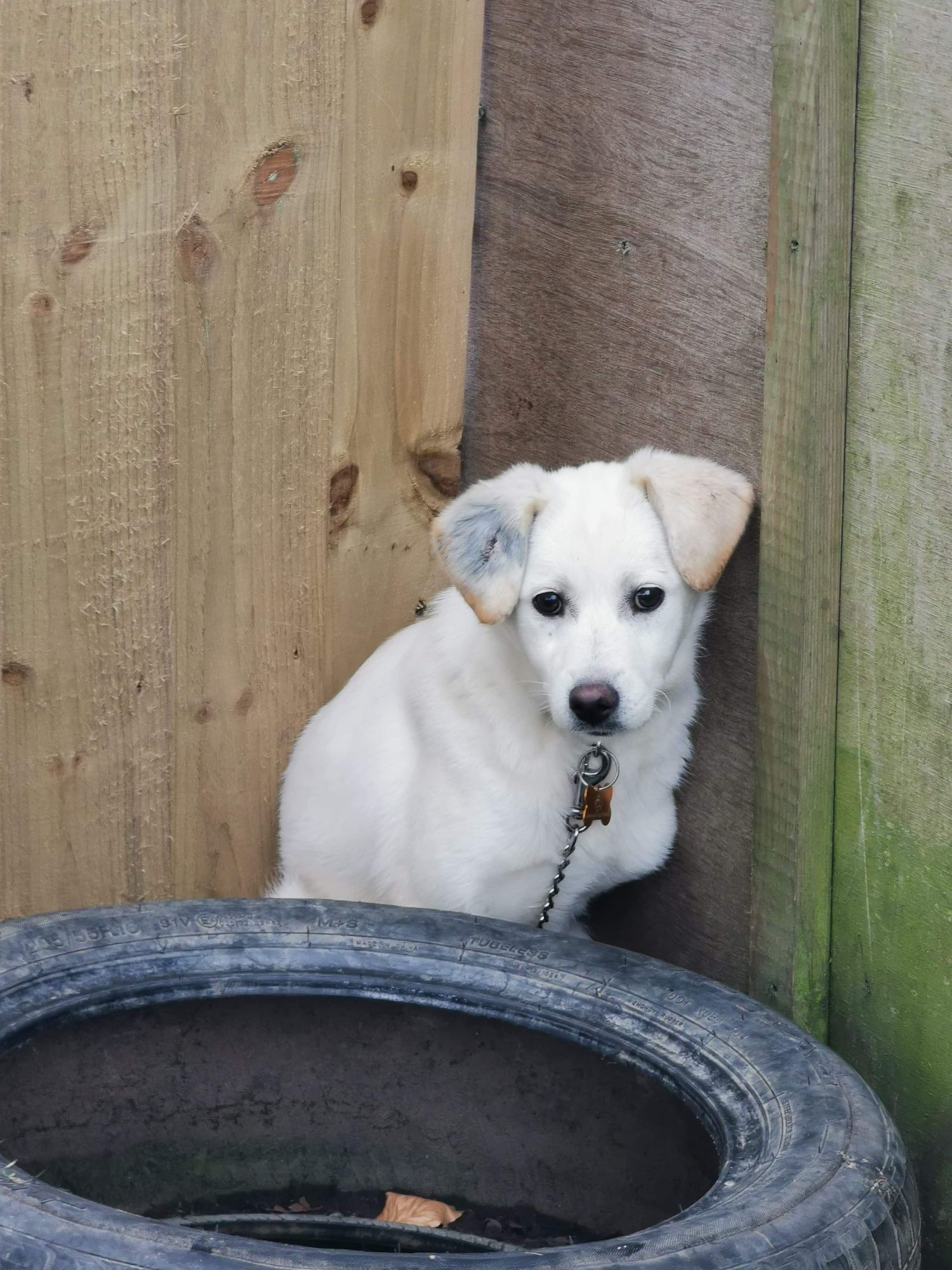
If you do not heed the warnings and decide to let them outside within hours of arrival it is highly likely you will be trying to contact the rescue at 10pm asking for advice on what to do - the dog will either ben running away from you or wedging themselves into gaps and bushes, refusing to move, or snapping if you try to touch them.
Many adopters have learned from this and we do not recommend just hoping for the best - although we are here to help, there's not much we can do for you at 10pm on the night time!
When you do let the dog out into the garden a few days after arrival, the first time trying to get them to go back inside will not go as smoothly as you think it will.
The dog will run around in a panic, unsure what to do.
You will take almost half an hour, if not longer trying to get them back inside. If you're going to work on the day you let them out for the frist time, give yourself more than enough time to get them back in - do not leave it until last minute!
Ensure there are no gaps or holes the dog can wedge themselves in to, or bushes that they can hide in. You will be advised to trim the bushes back so that you can access them if need be.
Don't get frustrated.
Until your dog knows what you want from them they will run about panicked. You'll find that once they figure out how to go back in they will frind it easier the next time.
As many terrifed dogs can't be touched you will have to herd them inside. If there are multiple people in the household, get them to help you and work as a team. Mostly, all you're going to need to do is just walk toward the dog and they will move. You can have your arms slightly splayed but do not run about waving your arms or start shouting, all you will do is stress the dog out more.
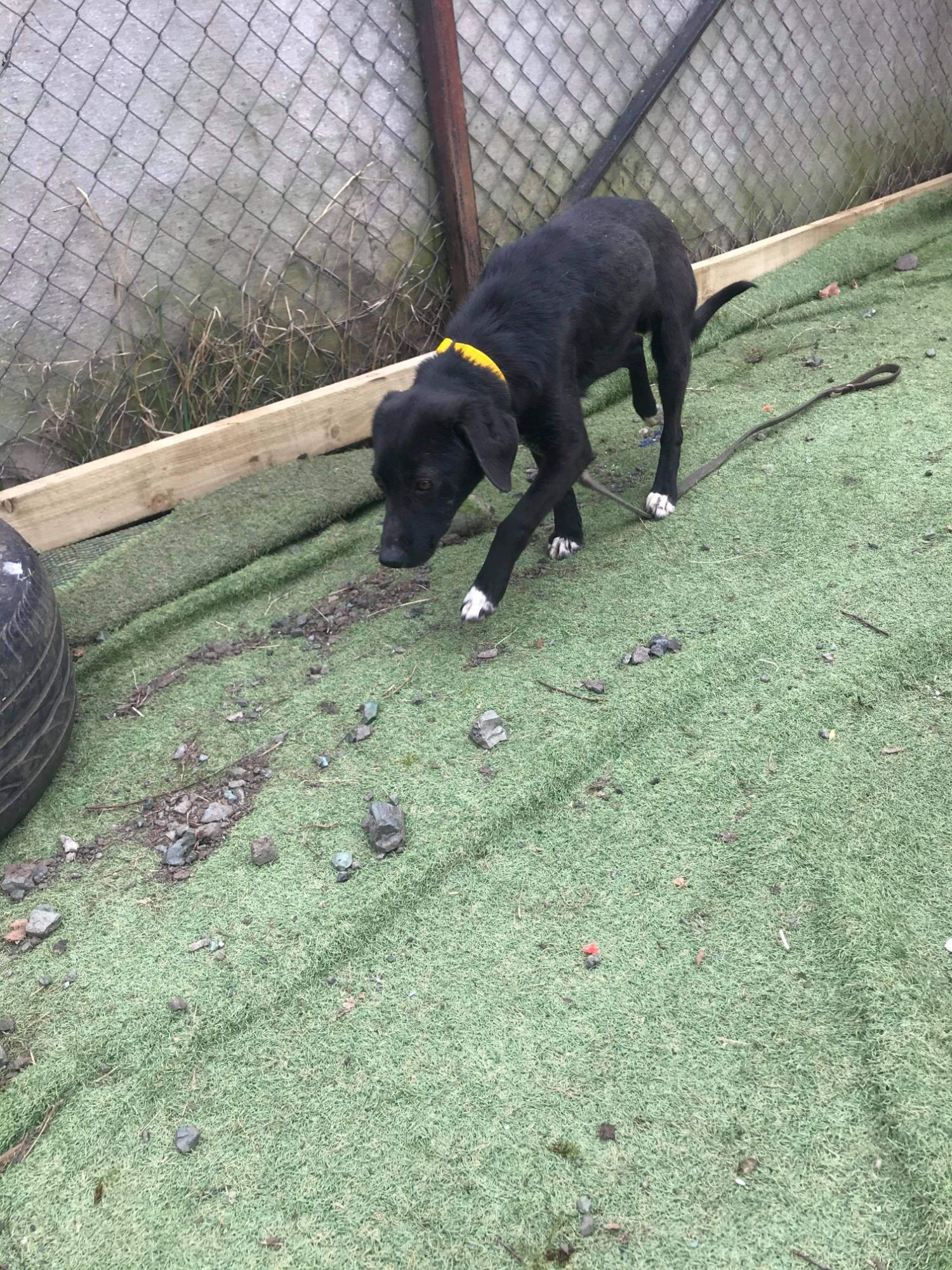
Ensure the door to the property is wide open giving the dog access. If there are things blocking the door, or obsticles to move around you will find herding them in much harder.
You can try:
- Placing their crate somewhere in the garden with food inside, once the dog makes a dash for the crate, quietly move over and close the door, carrying the dog back inside.
- Use a food trail - drop bits of food from the garden up to the back door, across the floor to their crate.
- Tie a piece of string or rope to the door and step away so the dog is less threatened by your presence, once the dog is inside, pull the string/rope and close the door.
- Leave the door open for a prelonged period of time, go inside and keep an eye on the dog, sometimes they will venture in on their own when they are not feeling pressurised.
- Place a bowl of food within sight of the door so the dog can see and smell it.
- Rustle treat bags - for some dogs this is enough to grab their attention.
- Block off or restrict access to some parts of the garden.
- If you have a particularly hard time and you manage to get the dog back indoors, keep them in for another couple of days and try again.
You're not alone...
There have been countless times where we have struggled getting a dog back inside to their kennel. It is just something that we don't openly post about.
On transport days it can take 5 staff up to an hour to get new dogs to head in the direction we want them to go - and we deal with this time and time again!
There have been times when we have had to call one another for back up and have left the centre and hour later than our shift finish because 1 dog will not go back inside.
I feel like this page deserves blooper videos of staff trying to herd dogs in to reassure you guys...
Just remember to be patient, and try not to get frustrated. Once the dog has gone in and out a few times they begin to know the structure, and soon they'll be in and out like clockwork.
